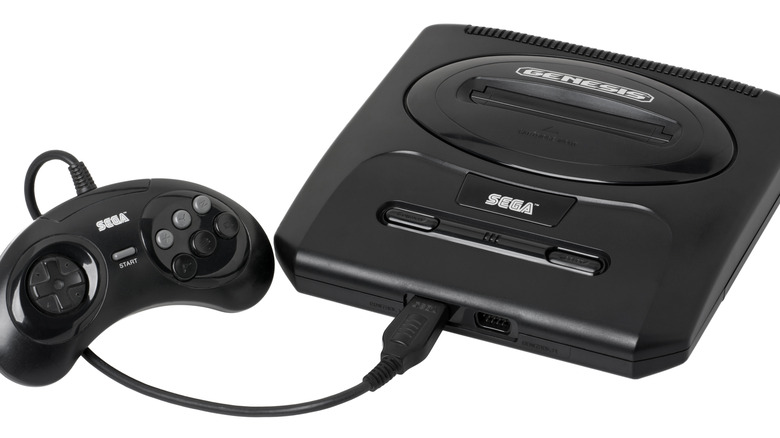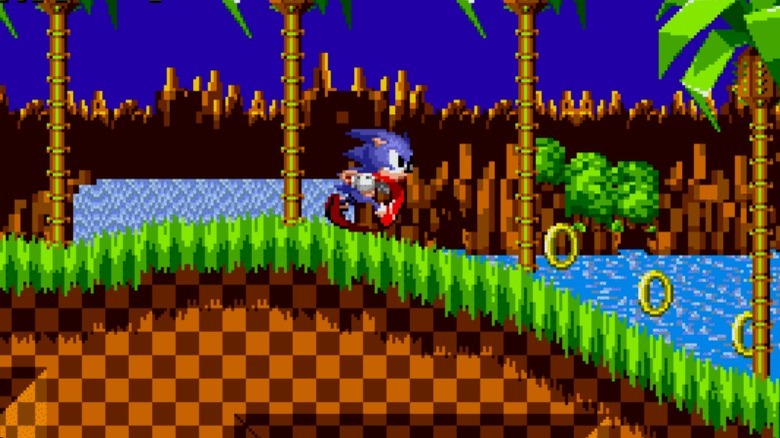Sega Genesis Blast Processing Explained
The Sega Genesis was a powerful console in its day. It was the first one capable of going toe-to-toe with the seemingly unstoppable juggernaut that was Nintendo. Bear in mind, this was back in the days before PlayStation and Xbox, when Nintendo was such a predominant force in the world that people had developed a tendency of referring to every gaming console as a "Nintendo," in the same way that people call all facial tissues Kleenex. Sega sought to distinguish the Genesis from the SNES through a series of aggressive advertising campaigns that emphasized three major points: the titles on the Genesis had more mature themes, the console was cheaper, and it was faster.
The focus on speed in particular was a major selling point for the console –- one the company was eager to exploit. That's why, after Sega's first stab at a mascot, the super-fast Sonic came into the spotlight. Sega wanted to show off the incredible speed that Genesis games could operate at, and this tactic proved largely successful as "Sonic the Hedgehog" became the console's best-selling title. This is also why Sega coined the term "blast processing" to describe the console's superior speed — though its history is a bit more complicated.
An advertising tactic
Blast processing isn't exactly a technical term. The first time most people heard it used was in a television advertisement produced by the Goodby Silverstein & Partners marketing agency in 1993. The commercial opens with a shot of the Sega Genesis and the Super Nintendo Entertainment System sitting side by side on pavement. A narrator states, "The Sega Genesis has blast processing. Super Nintendo doesn't." He then asks, "So what's blast processing do?" Then the scene transitions to a television playing "Sonic the Hedgehog" while strapped to the back of a race car.
The commercial cuts back and forth between the car taking high speed turns and snippets of "Sonic the Hedgehog," "Ecco the Dolphin," and "Streets of Rage 2," all playing at relatively high speeds. Then the narrator asks, "and what if you don't have blast processing?" just as the race car zooms past a beat up van with an old TV playing "Super Mario Kart" strapped to the back. As the van sputters and struggles to move, the implication of the ad is made clear –- the Genesis is faster than the SNES. Many assumed that "blast processing" was just a marketing gimmick since the commercial doesn't really explain what it is, but the truth is a little more complicated.
The Genesis is faster
It might seem like blast processing was simply shady ploy by Sega to sell more consoles, but there's actually a kernel of truth to it. First of all, the Sega Genesis is faster. It utilized two CPUs, a Motorola 68000 that could achieve 7.67MHz of processing speed, and a 3.58MHz Zilog Z-80. This blew the WDC 65816 in the SNES out of the water, since it could only achieve speeds of up to 3.58MHz (via History-Computer). The Genesis also featured more audio channels and produced higher resolution images. That doesn't mean it was better in every way, though. The SNES beat the Genesis in terms of RAM capacity, color, and its ability to produce more on-screen sprites.
Still, the added processing power in the Genesis did lend itself to the console's ability to generate faster movement, as it could produce image frames much more quickly. This faster processing speeds took Sega closer to the mountain top than it had ever been before — or ever managed to achieve since. Sega's Genesis sold 18 million units in North America, and 30 million worldwide. It came just short of the SNES' 20 million in North America and 49 million worldwide. It doesn't seem like this is actually the root of the term "blast processing," however.
Blast processing is a image generation technique
There was another thing that separated the Genesis from the SNES — the high-speed DMA unit in Sega's Yamaha VDP graphics processor. Apparently, there is a method of using this GPU to allow the color palette to be expanded beyond what the Genesis could typically deliver. John Linneman of the YouTube channel Digital Foundry posted a video in which he interviewed Gabriel Morales, an accomplished Sega Genesis hacker who has recently created a tech demo that takes advantage of the infamous blast processing. Linneman explained, "the technical director at the time, Scott Bayless was talking with an engineer, Marty Franz, I believe. He mentioned a bug found in the video hardware which just happened to be the infamous blast processing. "You could basically "blast" data at the video display processor." The effect that this had was an expansion in color palette. Unfortunately, the technique was problematic to use, and so no commercial games ever took advantage of it.
Linneman and Morales went on to explain that Bayless mentioned this technique to someone from marketing who like the sound of the words "blast processing," and that the marketing team ran with it in spite of them not fully understanding what the technique really was or how it worked. So in a way, blast processing was simultaneously a marketing gimmick, a description of the Genesis' genuinely superior processing capabilities, and a reference to a very unique form of image construction that was never actually used.




